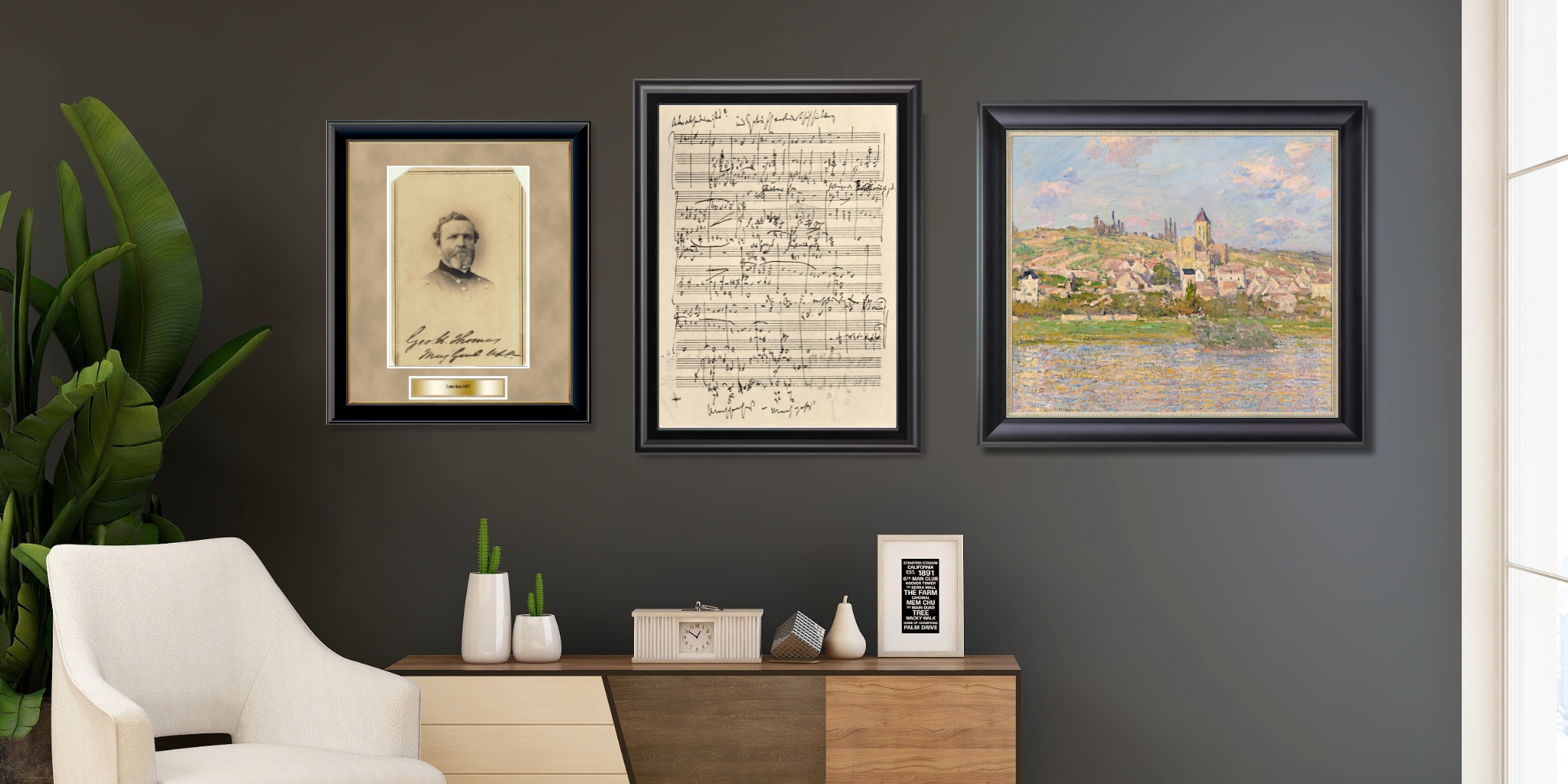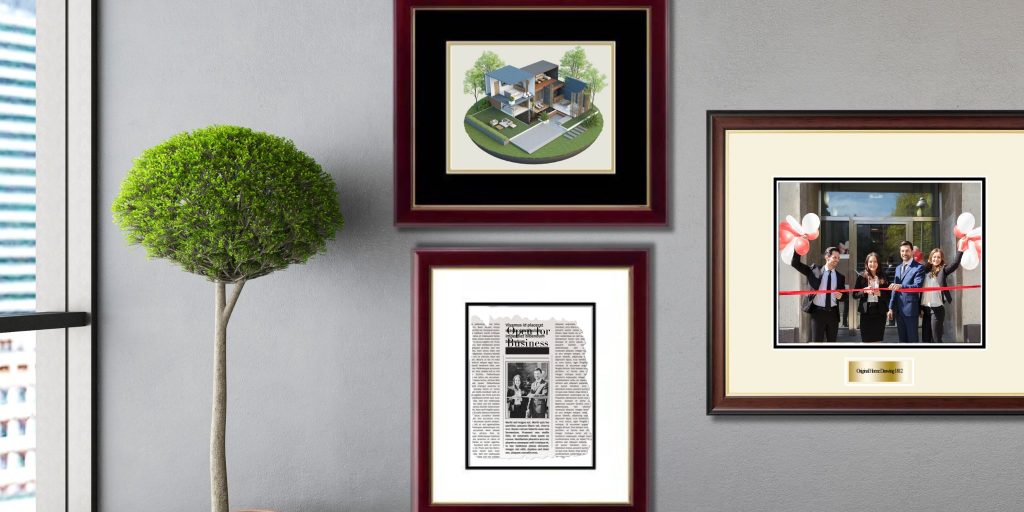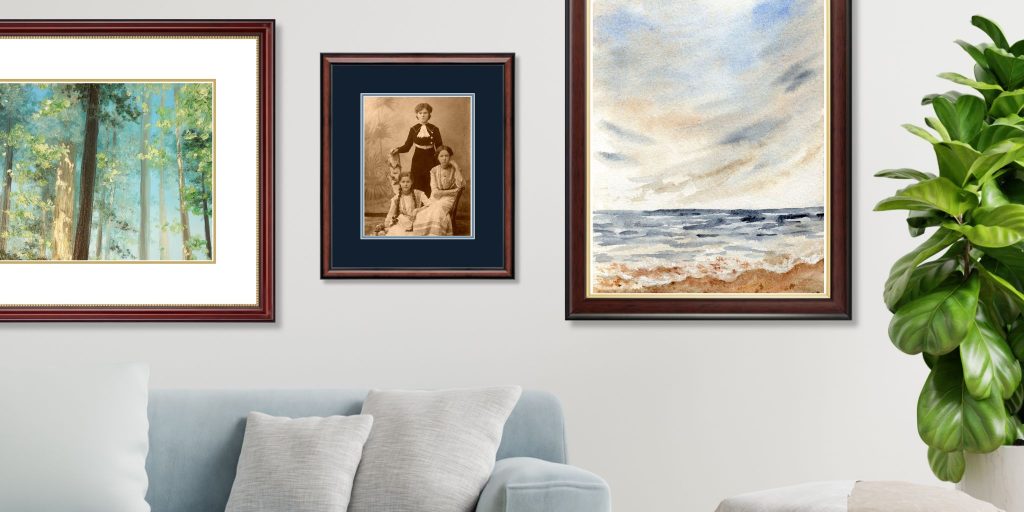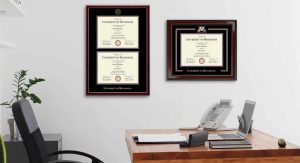
Quality picture framing is all about three P’s, preservation, proportion, and presentation. The goal is to design both the elements of the artwork and the frame itself so they create a safe and complimentary presentation. The artwork, mats and frame structure should be a coordinated presentation, with the mats and frame playing supporting roles. The artwork should always be the central focus when it comes to quality framing.
Preservation in Matting and Framing
When custom picture framing, the frame is meant to provide a setting for the artwork and to help integrate the art into the interior room environment. The matting of a frame both enhances this presentation and creates an air space to further protect the image. Because it keeps the glass away from the surface of the art, matting reduces the risk of damage due to environmental factors like excess humidity, condensation, and the associated issues of mold, mildew and deterioration.
The quality of the mat board is an important consideration. Any valuable artwork, diploma, or document of importance should be matted using a conservation quality board to ensure safe preservation. A basic acid-free buffered mat board is only suitable for inexpensive decorative pieces and is not a proper choice for fine art or documents where preservation counts. For valuable art, especially if it is placed in proximity to sunlight or bright interior lighting, selecting UV-protective glass is important to protect against color changes or fading. Church Hill Classics makes sure to offer a few different options of museum-quality glass for picture framing, so your preservation frames can be made with high-quality materials.

Proportion in Framing Counts
The intent of a well-designed frame is to draw the viewer’s eye to the art or document being showcased. To accomplish this, there must be a balance between the visual weight of the frame, the matting, and the art itself. In general, the larger the art, the wider the frame; however, the most important consideration is choosing a complementary moulding style that enhances the overall presentation of both print and frame. Mat borders are typically two-and-one-half to four inches wide, and increase with the size of the art to be framed.
Sometimes a small art piece may be showcased by placing it in a very wide mat or using a substantial frame moulding. In general, however, choosing matting that is overly wide or distracting in color or design can overwhelm your intended centerpiece—the art itself. By contrast, choosing very narrow mats may leave the artwork looking unsupported. This is a common mistake that consumers make, seeking a thin mat on the assumption it will reduce costs. While you may save a few dollars by making the frame a few inches smaller, the overall effect will be dramatically stronger with a well-proportioned mat and frame design. If you are investing in professional framing, trust your consultant’s experience and guidance, or seek a framer who offers visualization software so you can preview your design on a computer before you buy.
Presentation and Color in Design
A proper museum quality framing job enhances a work of art, whereas poorly proportioned or distracting framing and matting can detract from even the most beautiful piece. Both the frame and the mats should play off the tones and style of the specific artwork being framed. In general, it is best to use complementary and subdued colors, avoiding bright tones that compete with the intended focus. If you want a splash of more intense color, this typically works best as an accent treatment, such as an inner mat, that helps to draw the eye inward without overwhelming the art itself. For added drama or richness, textured matting like suede, linen, grass cloth or other fabrics, may be chosen to add richness and visual interest. Special effects such as v-grooves or artistic matting cutouts are specialty options that can be chosen to accentuate a theme or compliment your subject matter.

Why Choose Custom Quality Framing?
It’s important when framing valuable artwork or documents to consider investing in conservation-quality picture framing. By investing in high-quality framing materials and trusting a framing service, you’re improving the longevity of your document while creating an impressive framing display. While we specialize in diploma preservation frames at Church Hill Classics, we proudly offer custom picture framing options as well. As leaders in the custom framing industry, we want to help you craft a framed document or art piece you’ll be proud of for years to come!








